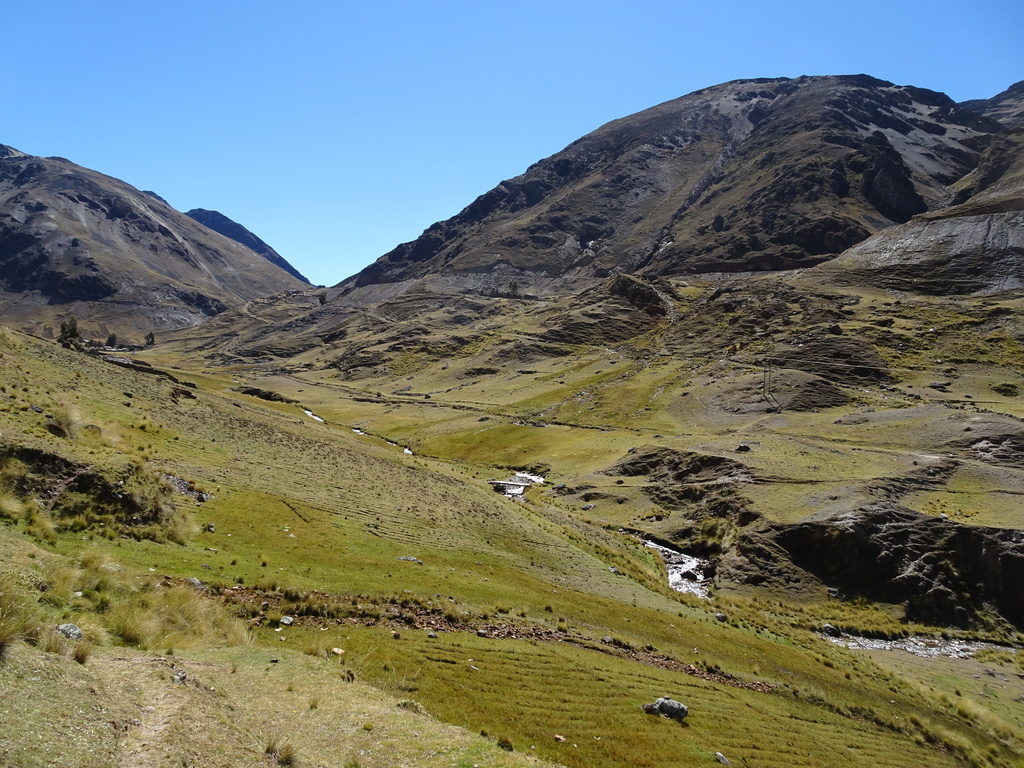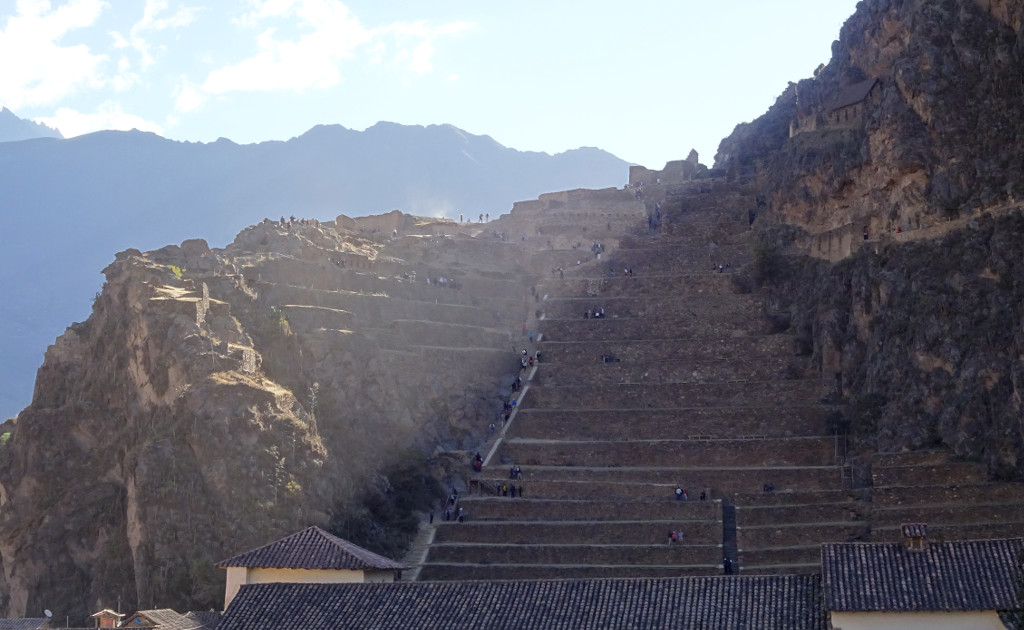Peru Day 6: The Promise of Ollantaytambo
Today’s options were:
- Long drive, short easy hike, some time at
Ollantaytambo,
and a
threatoffer to visit a beer pub; or - All-day hike through another 14,000-foot pass.
No-brainer, right?
Well, no: I had been aching to see Ollantaytambo for months. Our itinerary promised us one morning there (Day 7) but I wanted more, and Fernando’s evening-before recommendation agreed with mine: spending more time at Ollantaytambo was worthwhile. Plus, my only serviceable shoes at this point were my Fivefingers, and scree is not much fun in them.
Back into the vans we went for the hour-plus drive through the mountains and back to Ancasmarca where we debarked, peed under a bridge, and set off on the Qapaq Ñan—remember, that means “Royal Trail”, as in Inca Trail—from Ancasmarca down to Totora. Inca Trail: wide, gentle, manicured, easy. And so it was, and spectacular too.
Does it look stark? Harsh? It didn’t feel that way, but it is: People live here, and it’s not an easy existence. We passed potato farmers busy in their fields and learned the nature of their work arrangements: a cooperative system in which everyone helps in each field, but requiring precise timing in the planting and harvesting—and of course cooperation from Mother Nature. Climate change is wreaking havoc with growing seasons, and there is little wiggle room here.
The walk was leisurely. Halfway down we encountered a small Quechua community who just so happened to have a bushel of freshly roasted potatoes and local cheeses for sampling. (Nice little touch, REI!). Both were delicious, and even though it was probably not even 11:00 we all sated ourselves on the surprise treats. In the Andes, as you’ve heard, not only are there six thousand varieties of potatoes but each individual potato is a unique individual with its own complex taste profile. Meaningless to a troglodyte like me who can’t distinguish between oaky watermelon and lemon-paprika undertones in wine, but I did enjoy my potatoes regardless. They were firm, crumbly enough to break into chewable chunks, satisfyingly starchy but not dry, nicely salted to bring out a pleasant taste, and distinctly unlike any I’ve had from our Farmer’s Market or Coop.
Oh, and we shopped too. This time I broke down and bought a scarf. Hustled and scrambled to convert my few remaining dollars to sols, working out a complicated deal with our two guides.
Onward. The canyon got shady. The environment changed, becoming lush with greenery. We passed Inca tombs high on the rock walls. And got to our waiting vans, which took us to our next lodge.
Afternoon
In a week of decadent accommodations, K’uychi Rumi was even more so. The grounds were exquisite. Beautifully groomed gardens. Ginger and I had a small house to ourselves: two bedrooms, two baths, kitchen, living room, deck, probably a bowling alley in one of the rooms as well. Somewhat more than we’re used to, more than we needed. I hope we’re not spoiled next time we road trip and stay at cheap motels.
We sat at a large rustic table in their outdoor garden and enjoyed a spectacular multi-course lunch feast, the star of which was a broccoli salad. I wish I could remember the rest, it was all good, but that salad was exquisite and somehow just what I needed then.
From there, a twenty-minute drive to Ollantaytambo, the road into which was fascinating: it’s essentially a one-lane cobblestone road, way too narrow for the steady stream of vans and buses coming in and out—so much for all that hype about Inca planning and foresight. We made it in, debarked quickly at the plaza, and Fernando gave us a whirlwind tour. Gaped at the Sun Temple, which we would walk up to in the morning. He sketched out one of the pareidoilic faces in the cliff across the way, promising he’d point out the second face in the morning. Brisk walks through the narrow town streets. A 15-minute stop in a soot-blackened room with mummified baby llamas on the wall and (live) guinea pigs scuttling all around the floors; the room made out to look untouched since the 15th century.
Then back out of town and to the beer pub. Microbrewery. Whatever. It was crowded, noisy, and completely unnecessary. But eventually we got to leave, and the rest of the evening was much better.

